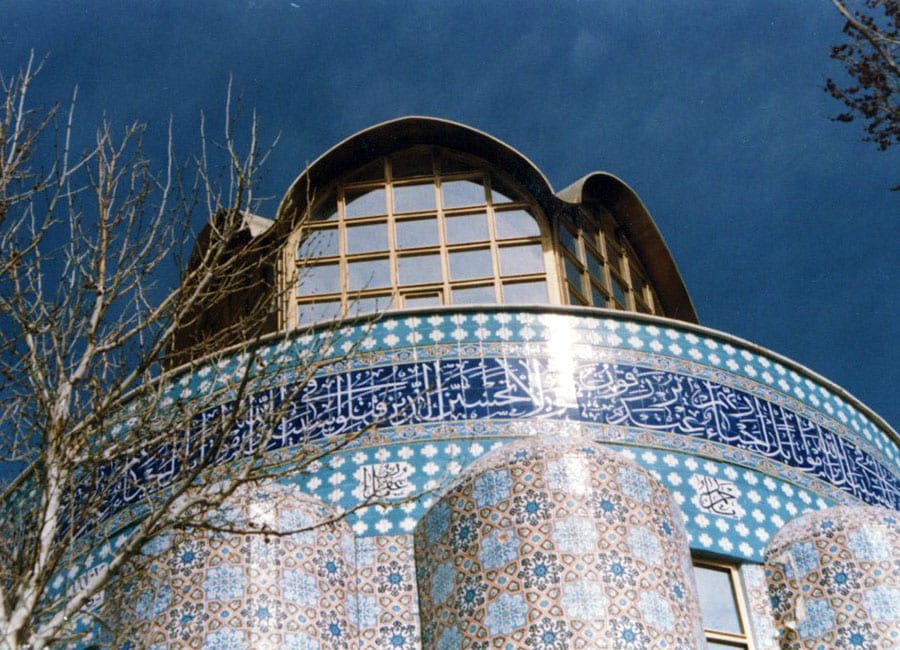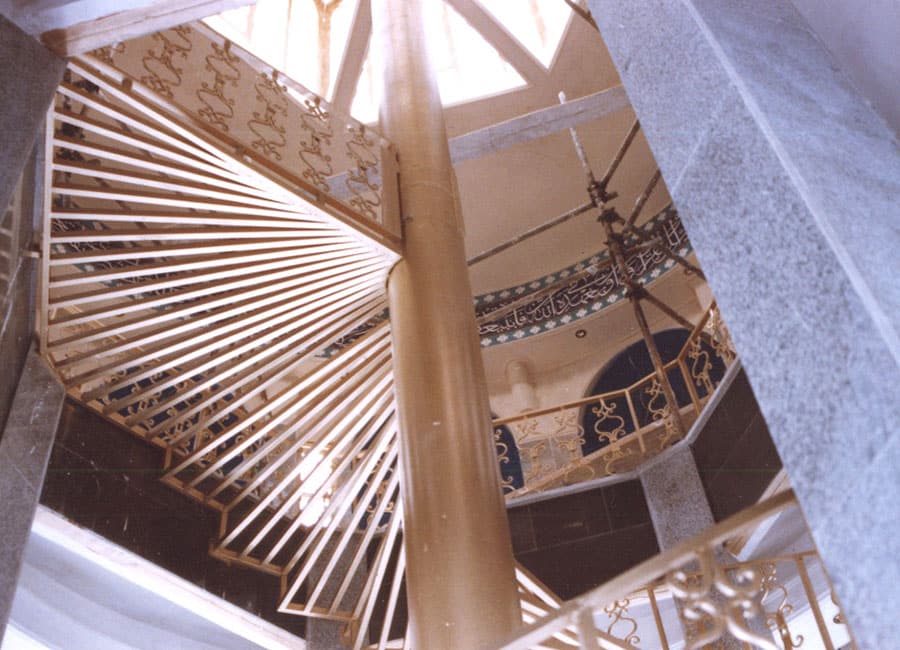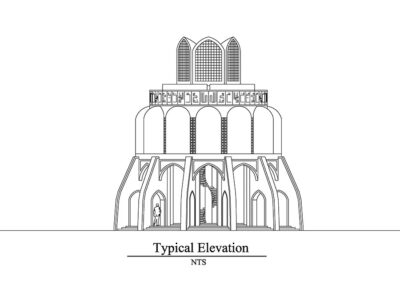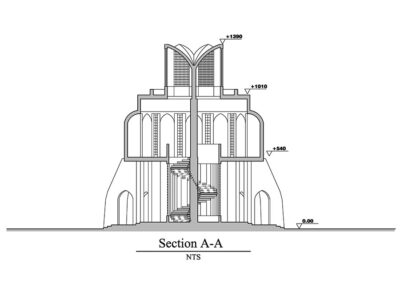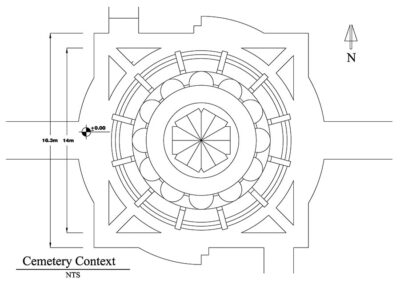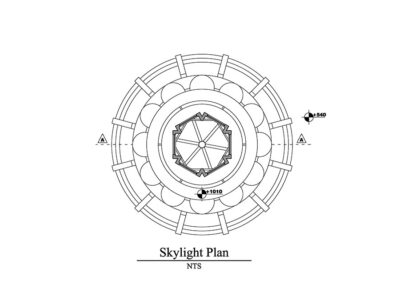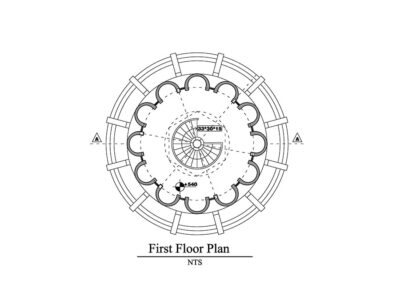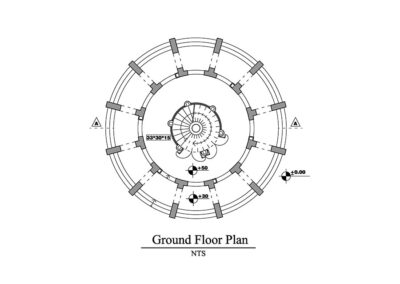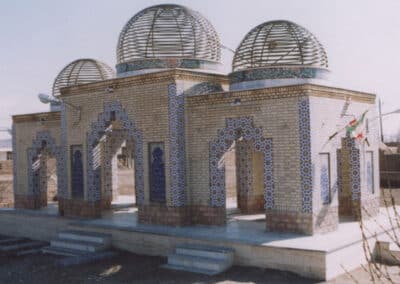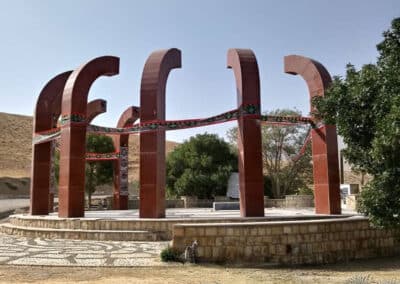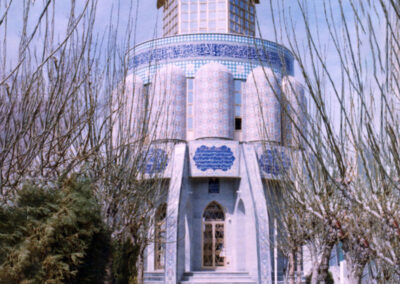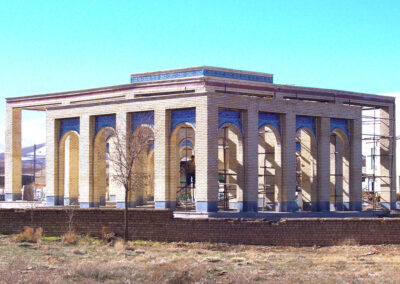Martyrs’ Monument – Central Cemetery, Arak, Iran
Symbolism, Sacred Geometry, and Landscape Architecture in Commemoration.
Located in the Central Cemetery of Arak, this commemorative monument serves as a solemn tribute to the region’s martyrs. The design harmoniously blends sacred symbolism, mythological references, and Shi’a religious beliefs into a contemporary architectural language. It embodies the profound relationship between spatial form, memory, and belief—core elements in the architecture of death and remembrance.
Symbolic Monumental Landscape: The Language of Faith and Memory
At the heart of the structure are twelve vertical columns, arched passages, and windows—each representing one of the Twelve Imams in Shi’a Islam. These elements are more than structural; they act as metaphysical anchors, rooting the monument within a deeply spiritual cosmology that resonates with Iranian religious and cultural identity.
The tulip, rendered abstractly in the form of the skylight, serves as a potent Persian symbol of martyrdom. It refers to the cultural belief that tulips grow from the blood of martyrs, making this feature a celestial aperture that invites divine light while evoking transcendence and eternal sacrifice.
The number six—used in the geometry of the skylight and other design components—symbolically responds to the Six Articles of Faith in Islam.
This numeric reference alludes to balance and harmony in Islamic metaphysics while subtly invoking esoteric cosmological themes of unity, intention, and spiritual duty.
The monument’s upper section features a crowned, light-permeable drum, symbolizing a celestial dome—a motif deeply rooted in Persian architectural tradition that signifies paradise and the eternal. The use of tilework and calligraphy further sacralizes the monument, transforming it into a space of spiritual reverence and collective memory.
Landscape as Processional Memory
The landscaped axis leading to the monument is conceived as a ritual procession path, lined with trees that accompany visitors on a symbolic journey from life toward remembrance and transcendence. The bare winter branches, visible in the image, highlight themes of sacrifice, dormancy, and eventual renewal.
The symmetrical layout fosters a contemplative spatial experience, evoking a sense of order, dignity, and serenity—qualities traditionally associated with memorial and cemetery design. Here, landscape architecture becomes an active medium in guiding both emotional and spiritual experience.
This project exemplifies my commitment to place-specific commemorative design, where architectural and landscape elements become storytellers of cultural memory, sacred symbolism, and spiritual passage.
Key Services and Design Concepts Applied
- Symbolic and sacred spatial design
- Monumental architecture rooted in Shi’a religious cosmology
- Integration of Persian myth and martyrdom iconography
- Landscape architecture for memorial procession and reflection
- Sacred geometry and numeric symbolism (12 Imams, 6 Principles, tulip motifs)
- Contemporary interpretation of Iranian architectural heritage
- Culturally embedded studies of light, shadow, and form
- Spatial storytelling for death, memory, and transcendence
- Site-responsive and ritual-based design within a historic cemetery context


